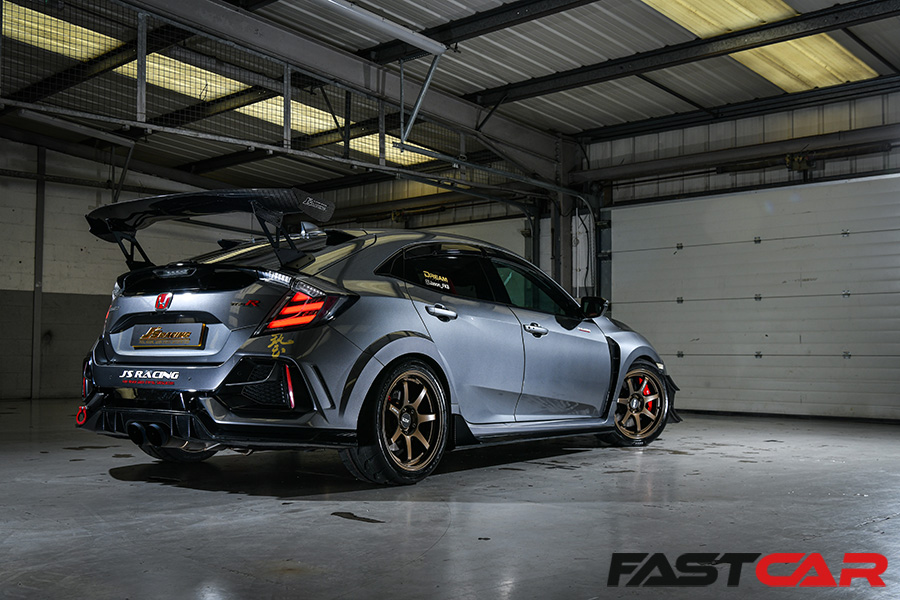Want to break lap records, or show off your inner style and flair? Whatever your goal, here are the best project cars you can buy today.
Us enthusiasts all love cars for different reasons. Perhaps it’s the rush of driving quickly, or the gratification you get from working on them with your own hands. Whatever your driving habits, aesthetic taste, or lifestyle are, there’s a car out there for you that’ll tick the right boxes. So, to help you on your way, here are our nominations for the best project cars that you can buy on the used market right now.
How we chose these cars
Although we’ve driven many cars over the years, we can’t say we’ve driven all of the ones featured on this list. However, having been at the cutting edge of the automotive scene since 1987, Fast Car is pretty clued-up when it comes to understanding which cars are right for each type of project or driver.
Like the rest of the staff here at Fast Car, I keep up to date with the latest trends across the modified scene, because it’s my hobby, not just my job. As such, you can be confident in the knowledge that these recommendations are coming from an informed source.
Skip to:
- best project cars for the street
- best project cars for track days
- best project cars for drifting
- best project cars for off-roading
- best project cars for drag racing
- best project cars for VIP builds
- What is a project car?
- How to buy a good project car
Best project cars for the street
Most of the time, street builds are what people aim for. These are the cars which offer plenty of performance and styling potential, yet still offer the degree of practicality and comfort that you need from a daily driver.
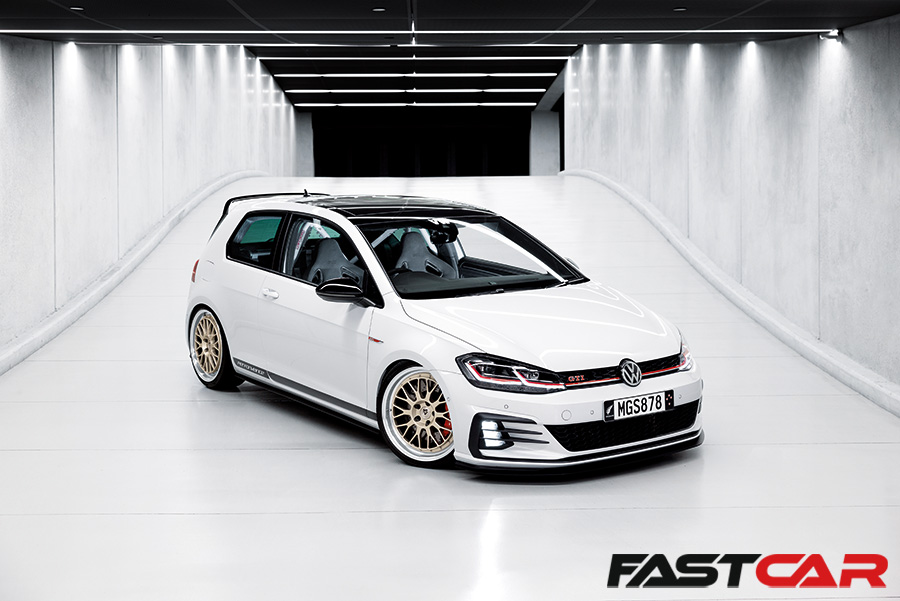
Volkswagen Golf GTI
If you want a car that can do pretty much everything, a hot hatch is a great genre to start with. And, for most people, the Golf GTI is the hot hatch to beat them all, perhaps alongside Honda’s Civic Type R (more on that later). More specifically, we’re championing the Mk7. Ask any motoring journalist, and they’re likely to point to this generation as being peak GTI. Though, if you’ve got a much tighter budget, the Mk5 is another very solid choice.
Being a modern five-door hatchback (although, you can get three-door examples if you prefer that look), the Mk7 Golf GTI is a genuinely practical car, with seats for your friends and family and a decent amount of space in the trunk. However, there’s also a lot of potential to take these cars to levels of performance previously not thought possible of a FWD hatchback. That largely comes down to the tunability of the Gen 3 EA888 engine, and the massive aftermarket that serves it. Read our full EA888 engine tuning guide to see what I’m on about.
Pros: Practical, quick, strong tuning community.
Cons: A bit limited on styling options.
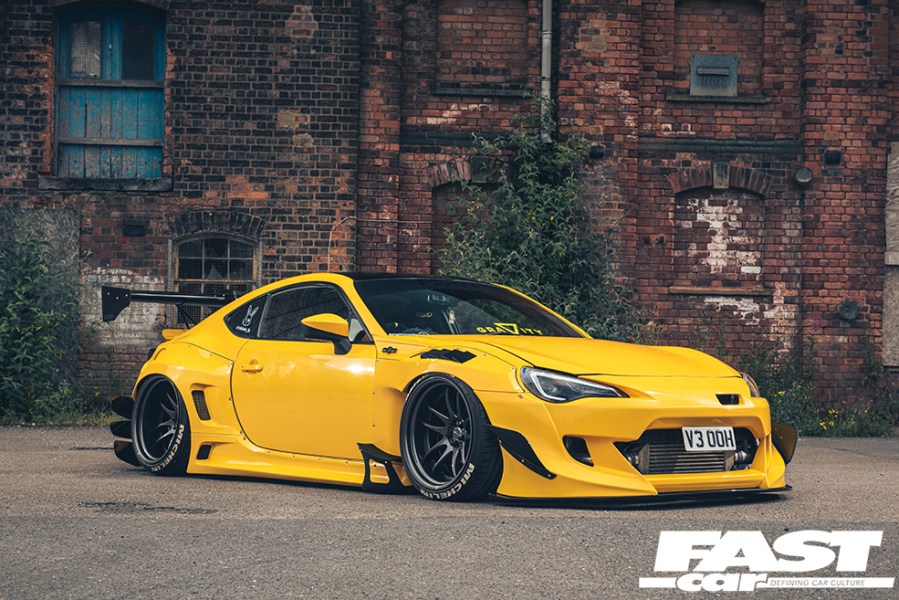
Toyota GT86 / Subaru BRZ / Scion FR-S
In a few years time, we’d probably put this in the ‘best project cars for drifting category’, but at the moment they’re still not cheap enough for that. Well, not unless you’ve got big money to burn. Instead, right now it’s much more sensible to use your GT86/BRZ/FR-S as the canvas of a street build.
The Toyobaru triplets have so much to offer, and for me, were probably the standout tuner cars of the 2010s. From the factory they come with sleek coupe styling, skinny tires, a pokey boxer engine, and a limited-slip differential. Straight away, that’s a recipe for fun, and as they aren’t too powerful, they’re a great platform for you to hone your driving skills with.
However, once the aftermarket got involved, the potential of these cars sky-rocketed. They’ll never be the fastest cars at your local meet (though you can make a decent few hundred horsepower with mods), but the array of parts available is huge. Whether you want to just slightly enhance your car for touge runs, go all out on wide body kits (as above), or turn it into an amateur racecar, the possibilities are endless. But for most people, the GT86 will serve as a great first introduction to the world of entry-level street car modification.
Pros: Huge parts aftermarket, brilliant handling.
Cons: not very practical, not very fast when stock.
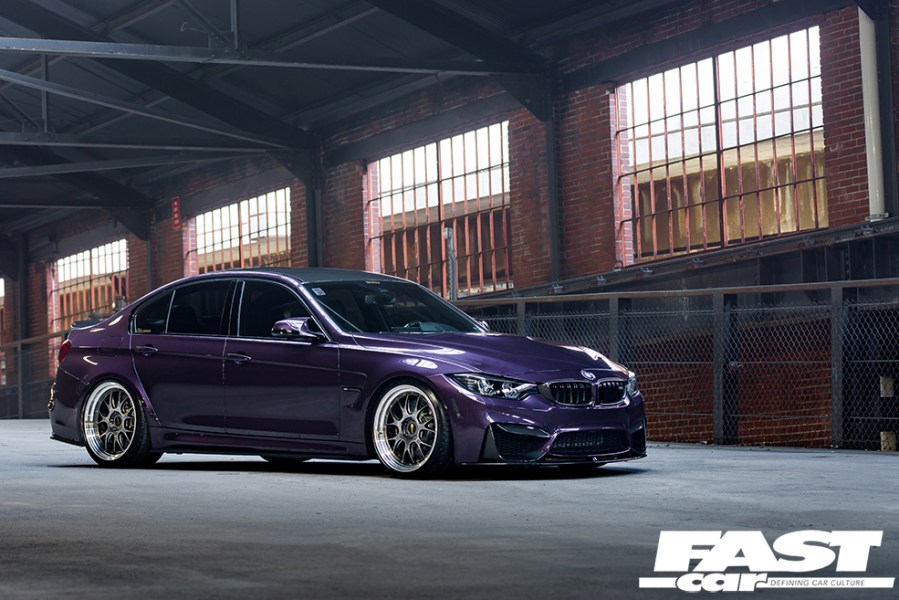
BMW M3 / BMW M4
If you’ve got a decent amount of cash to spend, you might do well to look at the next tier of marque above Volkswagen and Toyota, and instead get something like the BMW M3. Or BMW M4, if you really want a coupe. In particular, we’re thinking of the F8x generation of cars. As the outgoing generation of BMW M cars, these are still relatively new and therefore have fairly current interior tech within the cabin. The cabin itself also happens to be a very pleasant place to sit. The four-door M3 in particular would therefore make a brilliant daily driver.
But, when you aren’t simply cruising, the F8x cars have the ability to become true A-to-B missiles. The mid-range torque of the twin-turbocharged S55 engine can make for a truly rapid experience. And, if you decide to unleash it further with the help of the aftermarket, you’ll legitimately be troubling supercars in your practical sedan. If you like the sound of that, should you learn more by reading our BMW F80/F82 buyer’s guide.
Pros: rapid when stock and even faster when tuned, practical.
Cons: expensive.
Best project cars for track days
On a track day, all you need to care about is going faster than the previous lap. So, if you buy a project car for the sole purpose of track driving, you don’t need to worry about boring stuff like interior space, refinement, or emissions. As such, you can fully unleash the performance potential of cars like these…
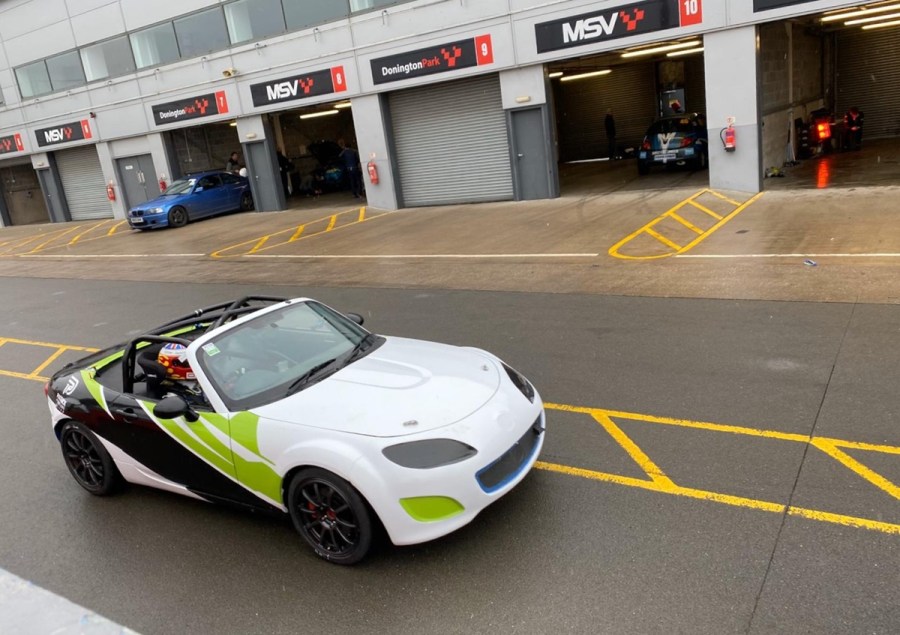
Mazda MX-5 Miata
Ok, it might seem a little ironic that I build this genre up with that intro, only to then refer you to a humble MX-5 Miata, but hear me out! Small, two-door convertibles and coupes make for prime candidates in this field because their lack of seats isn’t a hindrance. If anything, it’s a help, as it means less weight. You can even remove the front passenger one if you like. Plus, while we all know that MX-5 Miatas aren’t fast from the factory, they’ve been around for so long now that there’s a wonderfully healthy aftermarket for them. Even still, don’t expect crazy dyno results, but the joy of cars that are as light and well-handling as these is that you genuinely don’t need stupid power figures for them to feel quick.
Scene kids will tell you that when it comes to the MX-5, it’s either the Mk1 or nothing. But sadly those little pop-up headlight beauties are getting rustier and rarer by the day. Instead, we’d vote for the Mk3. Yes, you’ll still need to check them for rust unfortunately, but there’s way more stock examples advertised for sale at any given time. Plus, due to their status as arguably the least popular generation of MX-5, they often represent the cheapest way to get in to one of the most heralded lineages of enthusiast car. Plus, if you’re really stuck for inspiration, there’s a whole racing series based on these cars, from which you can steal ideas.
Pros: Easily accessible, strong aftermarket community, fun handling.
Cons: Slow when stock, can get quite rusty.

Honda Civic Type R
Earlier I said that the Volkswagen Golf GTI was probably the best hot hatch on the market. But that’s because it’s good at being sensible as well as fast. However, if all you care about is speed and agility, then I’d point you towards the Honda Civic Type R instead. For that reason, it makes the list as a project car for the track.
The FK8 Civic Type R is considered the best from a dynamic point of view. It’s got around 320hp on tap (which is plenty for a FWD platform) and a chassis that other marques could only dream of. The styling isn’t everyone’s cup of tea, but for a track build, that doesn’t really matter. Instead, you could lean into its childish aero and rework it into a sort of mini touring car. Strip it out, cage it, throw on some slicks, and all of a sudden you’ll be feeling like Nestor Girolami. The FK8 is the first Civic Type R to be sold globally, but if you live somewhere where there are older generations on the used market, an EP3 or FN2 would be a savvy low-budget buy.
Pros: huge aftermarket, great base platform
Cons: quite expensive for a track build, unless you have access to the older generations of Type R.
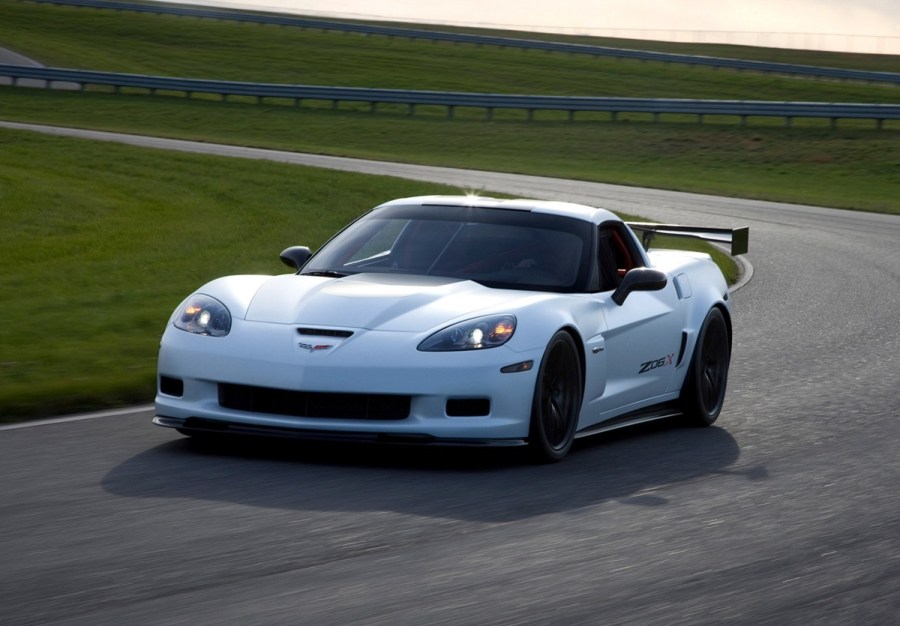
Chevrolet Corvette
At first, the Corvette might feel like a slightly odd suggestion. After all, American cars don’t exactly have the same reputation for circuit prowess as their foreign rivals do. However, you only need to look at GM’s success with the Corvette Racing team in international motorsport to realize that there’s real promise in this platform. It’ll take a bit of work, but if you’re ready to invest some decent time and money into your project car, then a Corvette could definitely become a commendable track car.
We’ve elected for the C6 as our generation of choice because of it strikes a nice balance between price and technology, but you could just as reasonably opt for an older C5 if a C6 is beyond your budget. The good thing about these cars is that, at least to begin with, you don’t need to focus on handling mods. The LS V8s in these cars offer 400hp and upwards, depending on trim level, which will save you money on engine upgrades for a while. Instead, you should focus on handling improvements, which can often be gained through simpler processes. Weight reduction, track/slick tires, better aero, coilovers, chassis rigidity are all areas which you can target that’ll have a big impact on the Corvette’s ability to take corners with the same prowess as the straights.
Pros: Lots of power from the factory.
Cons: expensive, aftermarket isn’t as big as it is for more obvious project cars.
Best project cars for drifting

BMW 3 Series
Listen, we’d all love to be like James Deane and rock an M3 drift car and name it something cool like ‘Eurofighter’, but realistically, that sounds crazy expensive. Instead, the next step down would be the 335i, or perhaps even the 325i. Any generation of 3-Series would be up to the task, but we’ve opted for the E9x. With this gen, you get the N54 straight-six turbo (in pre-2010 examples), which – as cliche as this sounds – is often considered to be the German 2JZ (albeit a little less bulletproof). Out of the box, the twin-turbo N54 makes 306hp, but talk to the people in BMW tuning circles and they’ll tell you that a remap alone can unleash an extra 25% on top of the standard figure. Our BMW 335i E92 tuning guide has got plenty more info about this car’s performance potential.
Overall, right now, it’s hard to get more bang for buck in the Euro scene. Plus, you’ve got the option of the E90 sedan or E92 coupe, meaning that depending on how extreme you want to go with this build, there’s an added layer of practicality which you can opt for in the sedan. You probably aren’t going to use a drift car as a daily though, so instead it might be a case of choosing whichever body style you prefer aesthetically, or whichever is cheaper at the time.
Pros: various body style options, great value for money.
Cons: powerful engine, but needs a bit of strengthening to cope with regular abuse.
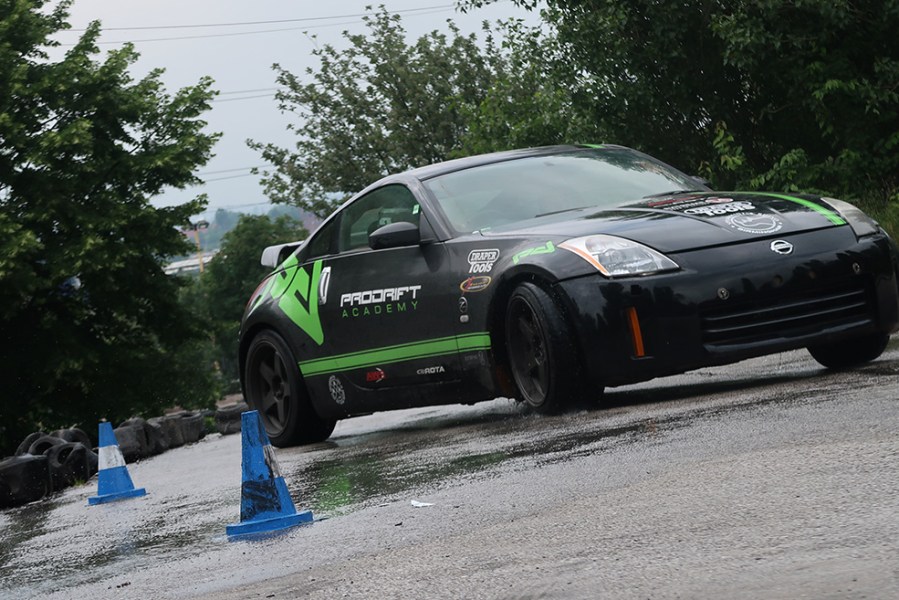
Nissan 350Z
Once upon a time, the S-Chassis cars would’ve been the go-to platform for drifting. But nowadays, it’s almost impossible to find a stock example, and those that haven’t succumbed to the perils of the drift circuit will fetch an eye-watering price on the market. The days of getting into an SR20 cheaply are, sadly, over. Instead, the modern Nissan equivalent would be the 350Z, or indeed the Infiniti G35. G35s are a bit cheaper, but they’re also less cool, and let’s be real – if you’re drifting, style matters. In that department, most people would agree that the Z comes out on top.
There’s a lot of memes out there about the VQ engine sounding like a trumpet, but I’ll let you into a secret – so long as you have a decent exhaust set-up, I think these cars can sound quite good. And besides, the VQ engine is pretty capable. It’s a 3.5-liter V6 that churns out 276hp and plenty of torque. In a standard 350Z, it might not feel so quick, but that’s largely down to the car’s weight – which tips the scales at around 3200lbs (1500kg) and beyond in upper trim levels – which you’ll need to have if you want the limited-slip diff. Once you start stripping the pounds out of it though, you’ll soon find that the Z becomes even more spritely, especially once you begin adding handling mods.
Pros: Plentiful at an accessible price, good platform once modified.
Cons: having to endure VQ engine ‘banter’ from scene kids, not always easy to find a manual version.
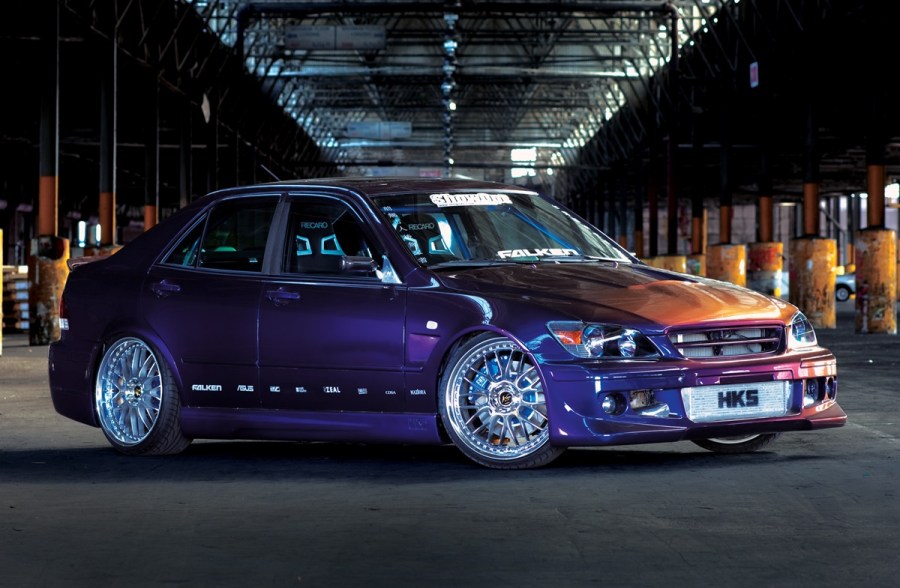
Lexus IS
The Lexus IS is arguably the most slept-on drift car of the moment. Whereas the Toyota Chaser currently holds the kudos with the drift crowd, it’s worth remembering that the IS300 also has a 2JZ under the hood. The lesser spec IS200’s 1G-FE engine admittedly doesn’t quite stack up against the 1JZ found in lesser-spec Chasers, but still, if you’re on a tight budget it’s a great way to get into a six-cylinder platform.
These cars can take an awful lot of punishment too, coming from an era of Toyota products which were wonderfully over-engineered. So whereas you might expect the engine to go pop in a similar BMW, it should take longer for the Lexus to meet its maker. And, although tuning possibilities are limited with the IS200, it should go without saying that the IS300’s 2JZ is capable of great things with a little aftermarket help. Most example have got an automatic transmission though, and not every trim level has an LSD. So you’ll need to shop around for the perfect canvas.
Pros: relatively cheap, good engine options.
Cons: mostly automatic, can suffer from rust.
Best project cars for off-roading
Off-roading can mean different things to different people. Most of the time when we think of off-road project cars, we think of the sort of SUVs and pickups that are a good choice for overlanding. But, some people might prefer a lighter rallycross-style build to simply have fun with on loose terrain. In this segment, I’ve covered both angles, starting with the more obvious one…
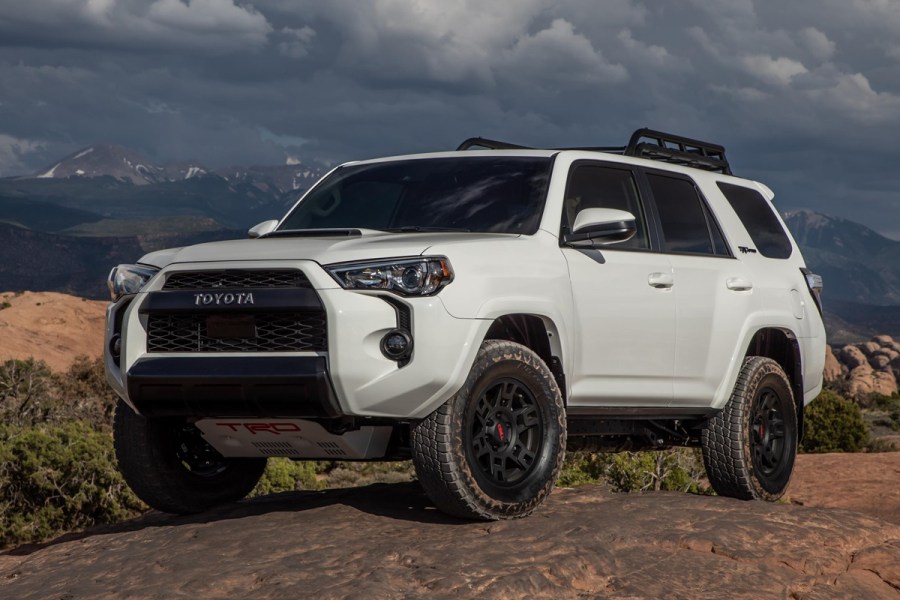
Toyota 4Runner
You can’t not like the Toyota 4Runner. It looks great, and has proven itself as arguably one of the most capable overlanding vehicles of the modern day. The 4Runner model line has been going for decades, but it’s the fifth generation which we’re most enamored with. Starting in 2009, the 5th gen 4Runner received a facelift in 2014 (as shown above) and is still in production today. The trim level that you should prioritize is the Trail Edition, as this comes with a part-time 4WD system, and a few other key features. Those features include Crawl Control (which controls the accelerator and braking during slow-speed extreme scenarios, so you can focus on steering) and Toyota’s Kinetic Dynamic Suspension System (KDSS) which hydraulically adjusts itself when it senses a wheel drop.
As for the powertrain, you get a 4.0-liter V6 that produces 270hp and 278lb ft of torque, mated to a 5-speed automatic transmission. The aftermarket for these vehicles is extensive too, and in fact, Toyota even offers a whole range of extra bolt-on parts for the 4Runner under the TRD brand.
Pros: Capable, reliable, cool.
Cons: Newer models can be expensive.

Jeep Cherokee
The XJ generation of Jeep Cherokee is a classic in the overlanding scene. Even though they’re getting on a bit in years these days, these gritty Jeeps just keep on surviving. Although they’re verging on modern classic status (and are therefore quite collectible now), you can still pick up an XJ for a fairly low sum, certainly compared to many newer alternatives like the 4Runner. Most of the inexpensive examples will have seen their fair share of trails though, so it always pays to inspect them thoroughly before parting with your cash.
Given their popularity over decades, the overlanding aftermarket for Cherokee XJs is massive. Once you get a lift kit, some large off-road wheels & tires, and bolt-on body guards, your Cherokee will not only hold its own in the forest or desert, it’ll look the part too.
Pros: relatively affordable, strong aftermarket community.
Cons: some engine options are underpowered.
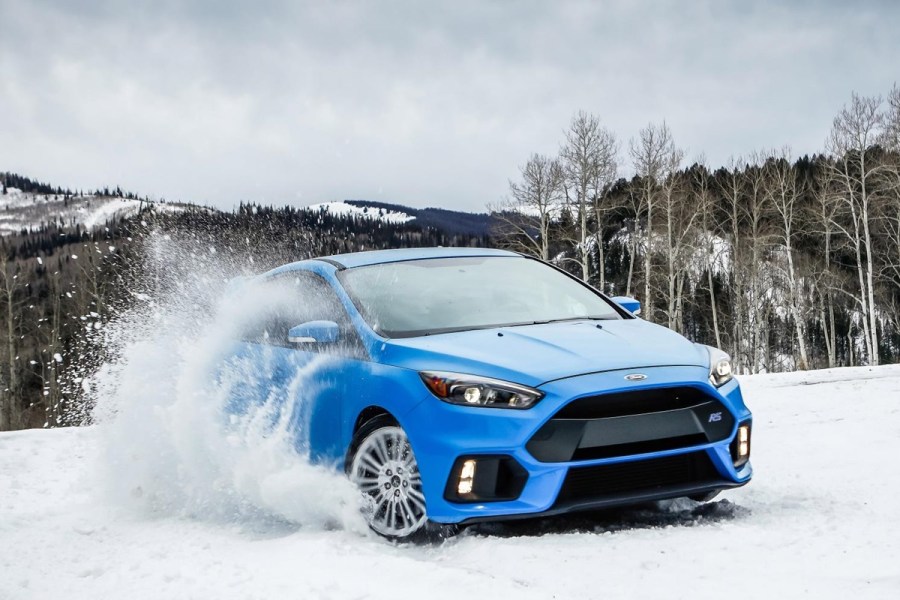
Ford Focus RS Mk3
Now for something a bit different. What if instead of a full-on trail warrior, you just want a fast car that’s capable of holding its own on loose terrain? This can be great fun on private land, on loose gravel trails, or even in amateur level rallycross racing. The obvious choice would be to go for a Subaru Impreza WRX STI, or a Mitsubishi Lancer Evo. However, Subarus don’t have the friendliest engines if you’re new to the tuning scene, and these days the Evos that are worth having will cost you a pretty penny. Instead, I reckon the Mk3 Ford Focus RS is a good shout.
The RS has a 2.3-liter turbocharged EcoBoost engine which kicks out an impressive 350hp and the same amount of torque. Power is sent to all four wheels thanks to Ford’s torque-vectoring AWD system. There are several driving modes coded into the Focus, including Drift Mode, which essentially tells the car to accept oversteer. On loose terrain, that sounds like it could be a whole lot of fun, potentially made even better with a few mods.
As well as the standard engine and handling mods you’d expect from the aftermarket, Ford Performance also rolled out the Drift Stick, which is an electronic handbrake developed in cooperation with Ken Block. And he knew a thing or two about how to make cars slide well. Plus, being a five-door hatchback, there’s enough room in the back to bring a few mates and all your gear along for the ride too!
Pros: Powerful, fun, practical.
Cons: best used in light off-road conditions
Best project cars for drag racing
Drag racing is a simple game really. It’s all about big power and having enough traction to put that power down to the tarmac. Be warned though, if you want to battle with the big boys on the strip, you’re going to need to spend a lot of money to get to their level…
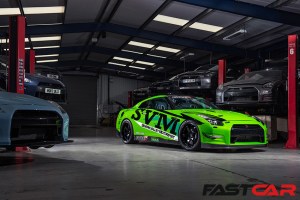
Nissan GT-R R35
The Nissan GT-R isn’t necessarily a vehicle that you’d instantly associate with drag racing, but the more you think about it, the more sense it makes. All-wheel drive is a huge bonus off the line (and when attempting to keep the power down during the run) and the tuning potential of the GT-R’s VR38 engine is out of this world. These blocks are incredibly strong, and if you’re prepared to sink some cash into mods, you can easily achieve 1000 horsepower or more. In fact, the fastest GT-R that we know of outputs nearly triple that figure and will rocket to more than 260mph if you’re brave enough. Frankly, those are staggering numbers for a production car.
Pros: huge tuning potential, strong engine.
Cons: expensive to buy and modify.
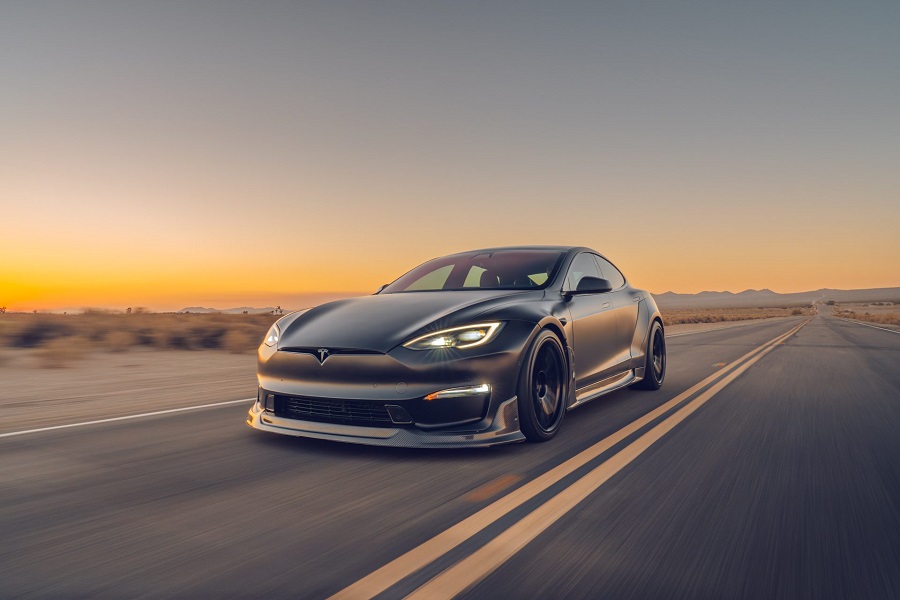
Tesla Model S
Let’s be honest, if acceleration is your focus, it’s hard to beat the instant power and torque of an electric powertrain. I mean, the 0-60mph figures claimed on stock Teslas these days is the stuff of comic books and cartoons. Blink for a second, or two, and all that’s left in their wake is a cloud of dust.
The latest, greatest examples are naturally rather expensive, but EV tuning methods are developing all the time. So, if you buy an older generation Model S from the early 2010s, you may eventually be able to reach the speeds of a PLAID or beyond, for a fraction of the price…
Pros: Instant acceleration, could be a daily driver too.
Cons: build quality, NO SOUND!
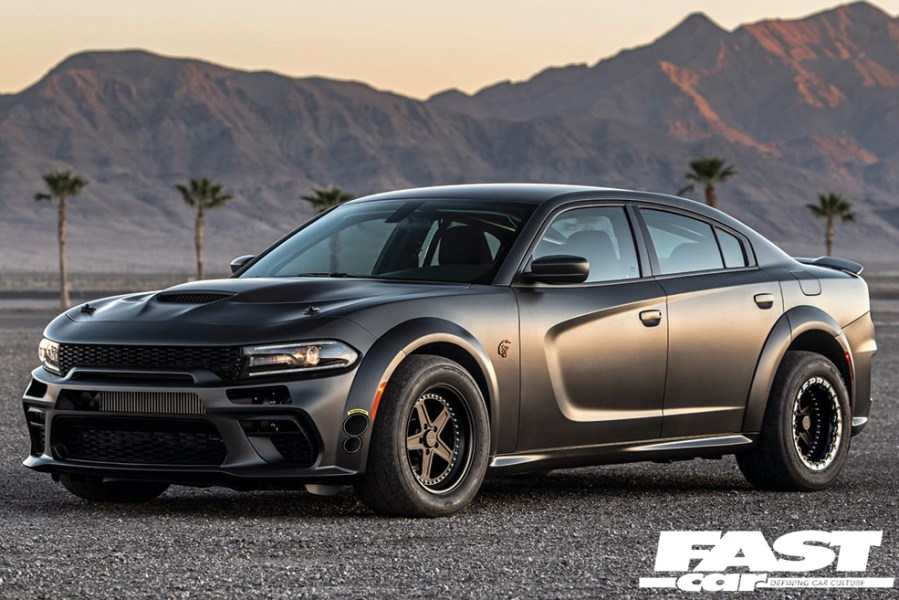
Dodge Charger
Despite the growing presence of other types of vehicle in the drag racing scene, American muscle cars still hold the closest association with this genre of project car. To me, of all the American brands, Dodge is the one that stands out, largely due to its willingness to continually put stupidly big engines in its production cars, and then offer MOPAR parts to make them even wilder! The regular good ol’ independent aftermarket has a few tricks up its sleeve for the modern-day Hemi engines too. So, if you bag yourself a Charger and throw a decent budget at mods, you could end up with your own Dodge Demon imitation, for a much more agreeable price, and with a greater deal of practicality. And what’s not to love about a roaring V8?
Pros: huge power potential, plenty on the market.
Cons: many are rear-wheel drive, so get an AWD example for best results.
Best project cars for VIP builds
Sometimes, project cars aren’t about going fast, going sideways, or going over rough terrain. Sometimes, they’re about status and luxury. This is where the VIP build becomes relevant. Inspired by the Japanese yakuza’s cars, VIP builds are typically discreet luxury sedans with an equal amount of attention given to the inside as well as the outside of the car.
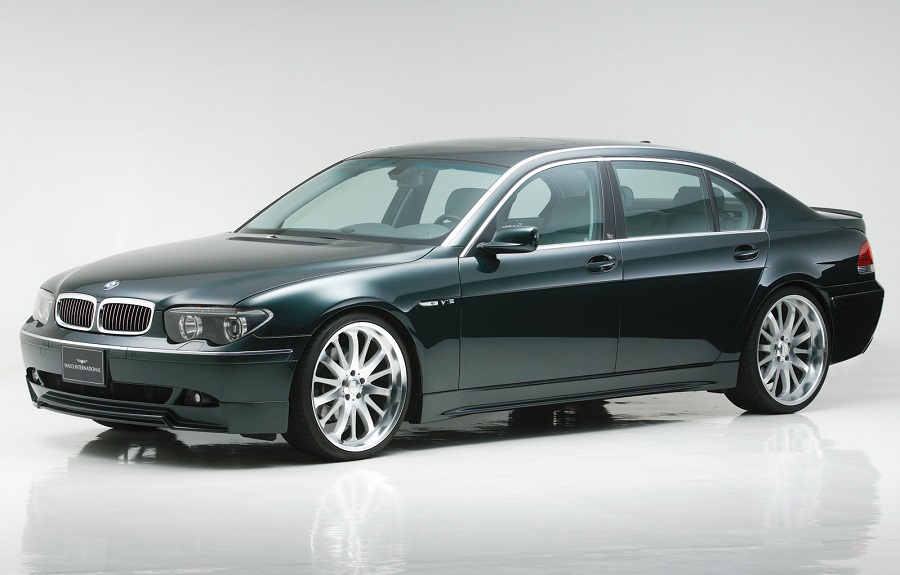
BMW 7 Series
To be a true VIP car, your vehicle needs to be as comfortable in the back as in the front – in fact, more so. Naturally, the best way to go about achieving this is by purchasing a long-wheelbase version of a given marque’s biggest executive sedan. Take the BMW 760Li, for example. Those two letters on the end of its nameplate stand for ‘limo’, which tells you all you need to know.
The E66 generation 760Li comes packing a smooth 6.0-liter V12 which sounds authoritative and outputs 439hp. In other words, this car’s pretty brisk when you need it to be. And, if you’re not a fan of Chris Bangle’s design work in its stock guise, I think a bit of aesthetic fettling can go a long way. Remember though, VIP builds should always retain an element of subtly, if not in the physical styling, then in the color of paint. Oh, and it’s got soft-close doors!
Pros: great engine, plenty of rear space.
Cons: expensive to run, controversial styling.
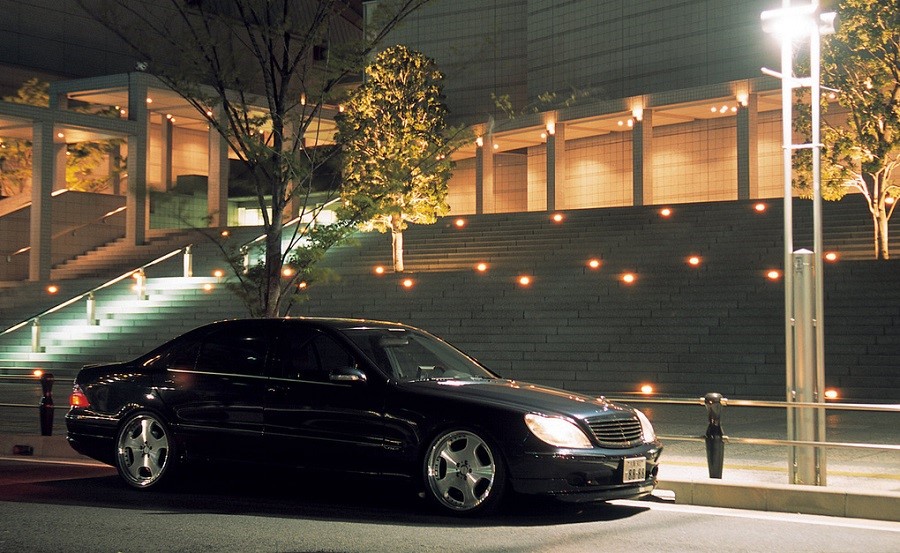
Mercedes-Benz S-Class
The German marques dominate the executive sedan market, so it should be no surprise to see another one listed here. Forever, the Mercedes-Benz S-Class has been the class leader in this high-end segment thanks to its constant technological innovations with every generation.
Of all the options you could go for, the W220 represents arguably the greatest ratio of risk and reward. It’s no secret that Mercs of this era suffered with electrical issues on occasion, and if something were to go wrong, they can be very costly to put right. However, they’ve also depreciated heavily, so if you get a good one, you could have a real bargain on your hands. If you’re unsure about which exact spec to go for, I’d point you in the direction of the S600 with its 5.5-liter V12. If you’re going to do a VIP car, you might as well go big.
Pros: very luxurious, often quite cheap.
Cons: expensive to run.
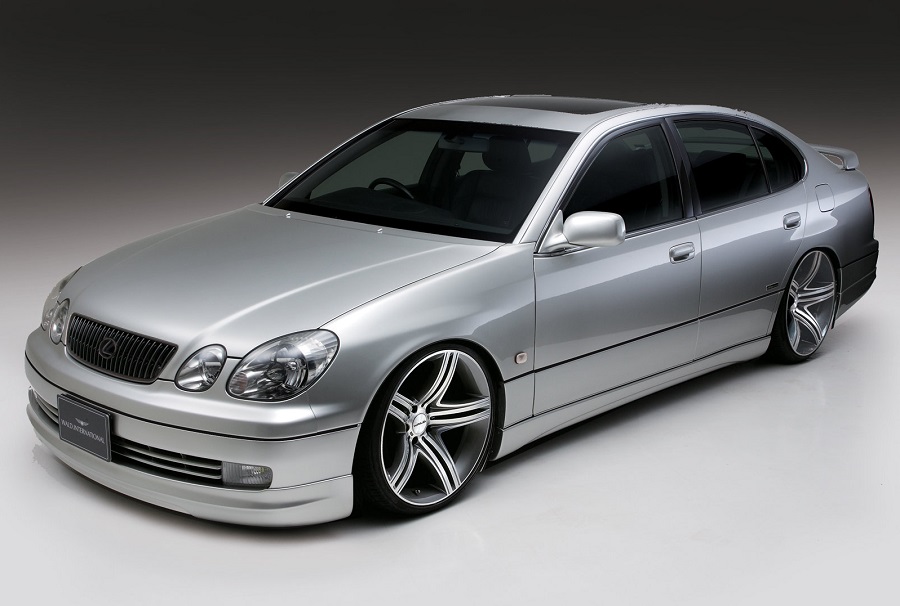
Lexus GS
True VIP builds should really be based on cars from the Land of the Rising Sun. After all, the yakuza tended to roll around in domestics. There are some great JDM options out there like the range of cars offered on Nissan’s Y33 platform, but if accessibility is important, then the Lexus GS is a great idea.
Sold globally, it’s easy to find these cars, and the second generation is often available for surprisingly low prices. You can source a GS300 with the aforementioned 2JZ straight-six under the hood, or if that’s not enough oomph for you, how about the V8s in the GS400 and GS430? The refreshing thing about this car is that, whereas there’s always going to be a concern over reliability with the old European stuff, this Lexus should soldier on strong for eternity. Especially if you’re just cruising about at VIP speeds.
Pros: Affordable, plentiful, reliable.
Cons: controversial styling, slightly smaller cabin space and engine range.
What is a project car?
A project car is a vehicle which you buy with the intention of modifying or restoring to make better in some way. Often, these cars will be old and/or used, ensuring that they can be bought for an accessible price, allowing for more budget to go on modifications. Depending on how extreme a person’s goals are, their project car might be their only car, or they might have another ‘sensible’ car alongside with which they can perform their daily tasks without hassle or worry.
Project cars can take on a variety of forms. If it’s an all-round street build, it’ll likely have a few performance and styling mods for fun, but nothing too crazy to make it impractical. Track builds, however, are only focused on going fast around a circuit. Sometimes, people even trailer their track cars to the circuit, rather than drive them. On a track, you don’t have to worry about refinement or roadworthiness, so all effort can go into making the car as fast as possible without compromise.
On the other end of the scale, show cars are project cars bought for the purpose of reflecting a certain style. These may receive limited or no mechanical attention, but have a widely changed exterior. Car culture is much deeper than just these examples though, so if you’re interested in learning more, consider brushing up on this article about the history of car modification.
How to buy a good project car
Rule number one when buying a project car is, unless you trust the previous owner, never buy anybody else’s project. Nine times out of ten, if you buy a car which someone has already started tinkering with, you’ll probably find all sorts of things which need undoing or putting right. And besides, buying a pre-built project car is kind of missing the point. A project car should be sculpted by your own ideas, and although it is possible to achieve that with a pre-modified car, it’s much easier to simply start fresh.
Attributes & condition
So, when looking for a base canvas on the used car market, what should you look for? Well, the answer to that depends on your intentions. If this project car is going to be your daily driver, you’ll need to look for something which is mechanically and structurally sound. However, if you plan on simply thrashing it around a skid pan, or using it as a shell for an extensive mechanical overhaul, then those things don’t matter so much.
Also consider the attributes of the car and how they tally with your goals. If you’re building a drift car, you’ll definitely want something rear-wheel drive. And if it has a limited-slip differential, even better. Alternatively, if you’re building an overlander, you’ll want something with plenty of torque and all-wheel drive, as well as good ground clearance (or at least the aftermarket ability to be lifted). Hopefully our list of suggested cars above helps you on your way, but if you don’t like any of those, keep the important attributes for your style of build in mind when scouting for other options.
Buy for the right reasons
Finally, the best piece of advice I can give you about buying a project car, is to buy the car that you want. That might sound obvious, but it’s easy to fall into the social trap of buying what’s popular in your chosen genre of build, or buying what you think will hold its value well. But each of us are drawn to different cars for different reasons. So, if you’ve got an idea in your head that you love, go for it – even if it’s a bit left-field! Individuality is what makes any creative culture great, and often it’s the more unique project cars that garner the most love and attention anyway.

